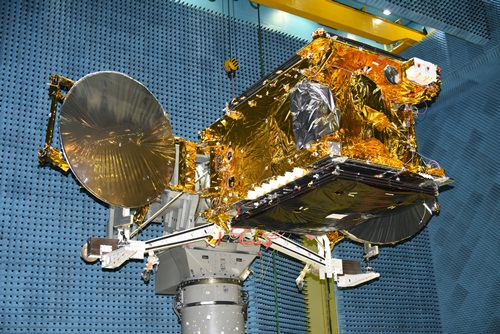
The primary mission of the Hyper Spectral Imaging Satellite (HysIS), whose mission life is five years
Sriharikota (AP): Adding another feather to its cap, ISRO's workhorse rocket PSLV-C43 Thursday successfully injected into orbit India's earth observation satellite HysIS. The 30 other co-passenger international satellites including those from the United States of America and Australia among others, will soon be placed into orbit.
The rocket lifted off majestically into cloudy skies in a burst of orange flames at 9.57 am from the first launch pad at this spaceport at the end of the 28-hour countdown. The HysIS was placed in orbit 17 minutes and 27 seconds after lift-off.
"#PSLVC43 successfully lifts off with 31 satellites, including #HysIS, from Satish Dhawan Space Centre, Sriharikota", ISRO announced on its Twitter handler Thursday morning.
"#PSLVC43 successfully injects Indian satellite #HysIS, into sun-synchronous polar orbit", ISRO wrote on Twitter minutes later.
The primary mission of the Hyper Spectral Imaging Satellite (HysIS), whose mission life is five years, is to study the earth's surface in visible near infrared and shortwave infrared regions of the electromagnetic spectrum.
"HysIS is an earth observation satellite developed by ISRO. It is the primary satellite of the PSLV-C43 mission. The satellite will be placed in 636 km polar sun synchronous orbit (SSO) with an inclination of 97.957 deg. The mission life of the satellite is 5 years," ISRO said.
The co-passenger satellites have been contracted for launch through ISRO's commercial arm Antrix Corporation Limited. PSLV-C43, is the 'Core Alone' version of PSLV. It is the lightest version of the launch vehicle.
This is ISRO's second launch in the month. The space agency had launched its latest communication satellite GSAT-29 on board GSLV MkIII-D2 on November 14. Source: ummid.com

